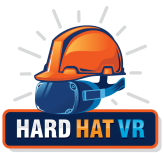1. VR is 400% faster than classroom based learning
Summary: When compared with traditional classroom based learning, a study from PwC demonstrates a 400% reduction in time required for training. Even when including the time required to get setup with the headset, learners in VR were still 300% faster, and this doesn’t include the time it took learners to get to the classroom.
2. 85% of learners prefer VR over traditional methods
Summary: When surveyed following the use of virtual reality and traditional methods to teach technicians on a factory floor, over 85% of respondents expressed that they preferred learning in VR as compared with traditional methods.
3. VR training is 83% less expensive and 50% faster than traditional
in-person simulation
Institutions and students leveraging virtual reality for advanced cardiac life support (ACLS) training experienced a significant reduction in cost and time of training.
4. Virtual Reality Training Improves Operating Room Performance
Summary: Surgeons trained via Virtual Reality (VR) to perform operations. Trainees performed 29% faster and made 6x fewer errors than those trained via conventional methods.
5. Using Serious Games to Improve Aircrew Training
Summary: Soldier study participants scored 17% better using game-based simulation versus conventional methods of training.
Published by: Arizona State University in partnership with Anacapa Sciences, Inc.
6. Using VR Based Training For Maintenance Procedures
Summary: Surgeons who used VR training for 2 hours improved their time on task by 83% and were 70% “more efficient” in movement and measurements. There was no comparison group in this study.
Published by: University of Michigan Medical School in partnership with Cybernet Systems
7. Development and Analysis of VR Technician Training and Methods
Summary: In a technician training study, those who used VR versus those who did not use VR had equal results. But, the study suggests that because of the deployment advantages of Virtual Reality (cost, scalability, ability to iterate), it should be used as a primary means for training. Further, in surveys following the study, 85% of participants preferred VR training to traditional .
Published by: Brigham Young University

